Have you heard these two words, GPON and EPON? If you did, did you know their differences?GPON means Gigabit Passive Optical Network and EPON means Ethernet Passive Optical Network. Both of them belongs to PON (Passive Optical Network), which is a fiber network that only uses fiber and passiv components like splitters and combiners rather than active components like amplifiers, repeaters, or shaping circuits. Such networks cost significantly than those using active components.
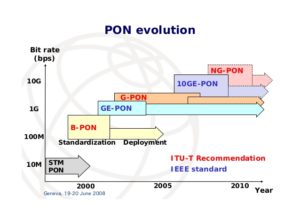
PON has recently attracted much attention due to its low cost and high performance. In this post, we are going to introduce the PON which mainly involves the basic components and related technology.
GPON, or gigabit-capable PON, uses an IP-based protocol and either ATM or GEM (GPON encapsulation method) encoding. Data rates of up to 2.5 Gbps are specified and it is very flexible in what types of traffic it carries. GPON enables “triple play” (voice-data-video) and is the basis of most planned FTTP (Fiber to the Premises) applications in the near future.
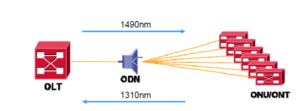
G-PON VS E-PON Standard
EPON, based on Ethernet technology, is compliant with the IEEE 802.3ah (mid-2004) Ethernet in the First Mile standard that is now merged into the IEEE Standard 802.3-2005. It is a solution for the “first mile” optical access network. While GPON, or Gigabit PON, is expected to prevail as a leading optical access technology and to eliminate the bandwidth bottleneck in the last mile. Its requirements were set to force by the Full-Service Access Network (FASN) group, which was later adopted by ITU-T as the G.984.x standards.
G-PON VS E-PON Data Rate
EPON generally delivers 1 Gbit/s symmetrical bandwidth. And its Gigabit Ethernet service actually constitutes 1 Gbit/s of bandwidth for data and 250 Mbit/s of bandwidth for encoding. GPON, however, promises 1.25 Gbit/s or 2.5 Gbit/s downstream and upstream bandwidths scalable from 155 Mbit/s to 2.5 Gbit/s. The following table has a brief comparison of GPON and EPON technology in the PON upstream and downstream bandwidth, bandwidth efficiency and the transmission.
| GPON | EPON | |
| Standard | ITU-T G.984 | ITU G.983 |
| Protocol | GPON encapsulated
Mode(GEM)support Ethernet TDM ATM |
ATM |
| Speed | 2.5Gbps Downstream
1.2Gpbs upstream, |
1.25Gbps Symmetric |
| Max. Split Ratio | 64 users | 64 users |
G-PON VS E-PON Distance
With either protocol, the practical limitation to reach comes from the optical-link budget. With the reach of both protocols currently specified at approximately 20 kilometers, the difference in split rates — the number of optical network units (ONUs) supported by one optical line terminal (OLT) — is a point of differentiation.
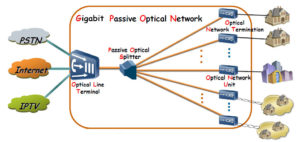
GPON promises to support up to 128 ONUs. With the EPON standard, there is no limit on the number of ONUs. Depending on the laser diode amplitude, when using low-cost optics, EPON can typically deliver 32 ONUs per OLT, or 64 with forward error correction (FEC).
G-PON VS E-PON Management systems
EPON requires one single management system, which means EPON results in a significantly lower total cost of ownership. In addition, it does not require multi-protocol conversions, and the result is a lower cost of silicon. In GPON, there are three management systems for the three Layer protocols. Thus it is more expensive. Furthermore, GPON does not support multi-cast services. This makes support for IP video more bandwidth-consuming.
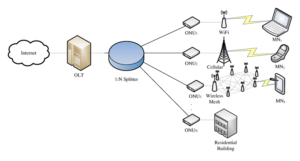
G-PON VS E-PON Cost
An ODN consists of fiber cable, cabinet, optical splitter, connector, and etc. For the same number of users, the cost for the fiber and cabinet with EPON is similar to that with GPON. The cost of OLT and ONT is decided by the ASIC (Application Specific Integrated Circuit) and optical transceiver modules. There are only several chipset vendors who can provide GPON chipsets, and it is not likely that the price of GPON equipment can decline rapidly. The optical module of GPON is also more expensive than EPON. When GPON reaches deployment stage, the estimated cost of a GPON OLT is 1.5 to 2 times higher than an EPON OLT, and the estimated cost of a GPON ONT will be 1.2 to 1.5 times higher than an EPON ONT.
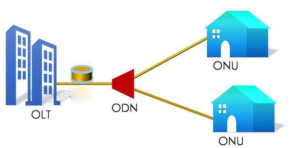
Summary
Both of GPON and EPON have their own advantages and disadvantages. It’s hard to say which is better. It seems that we will continue to use them in the future.



